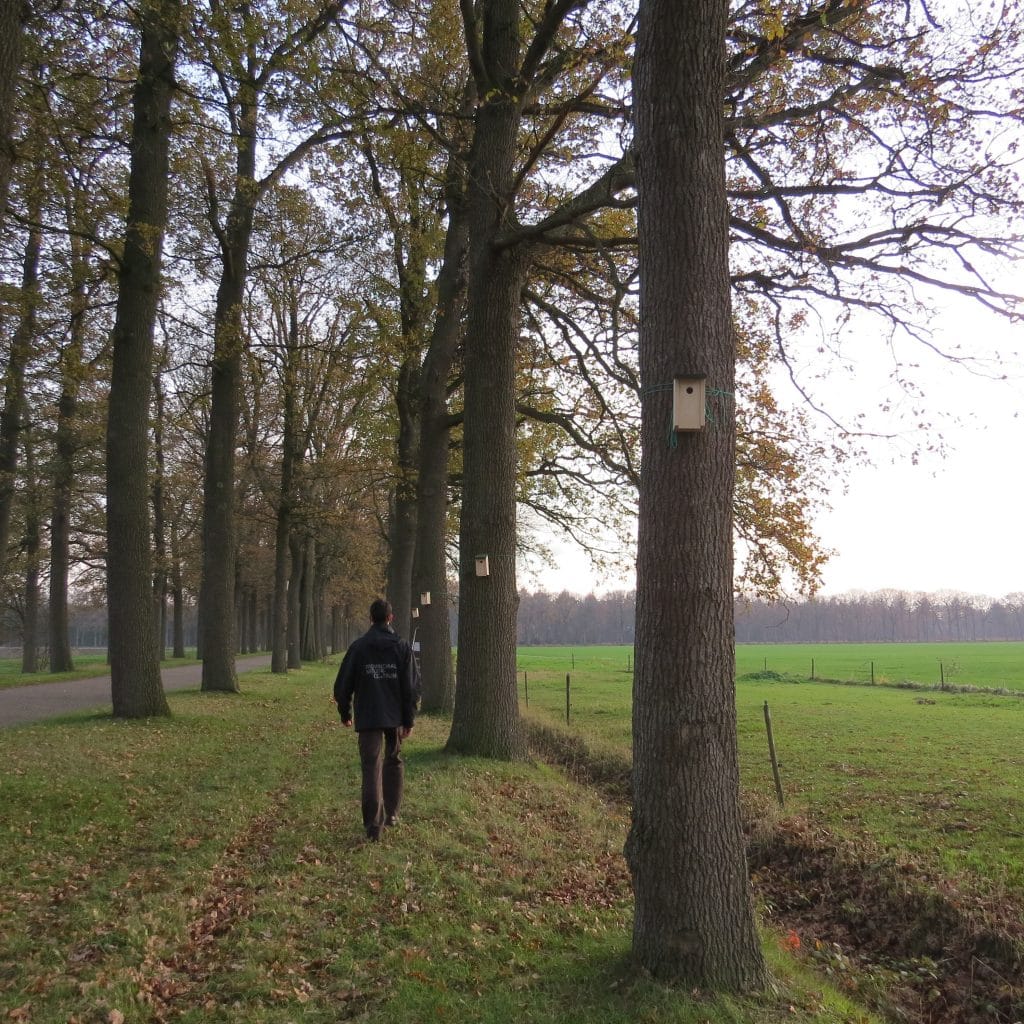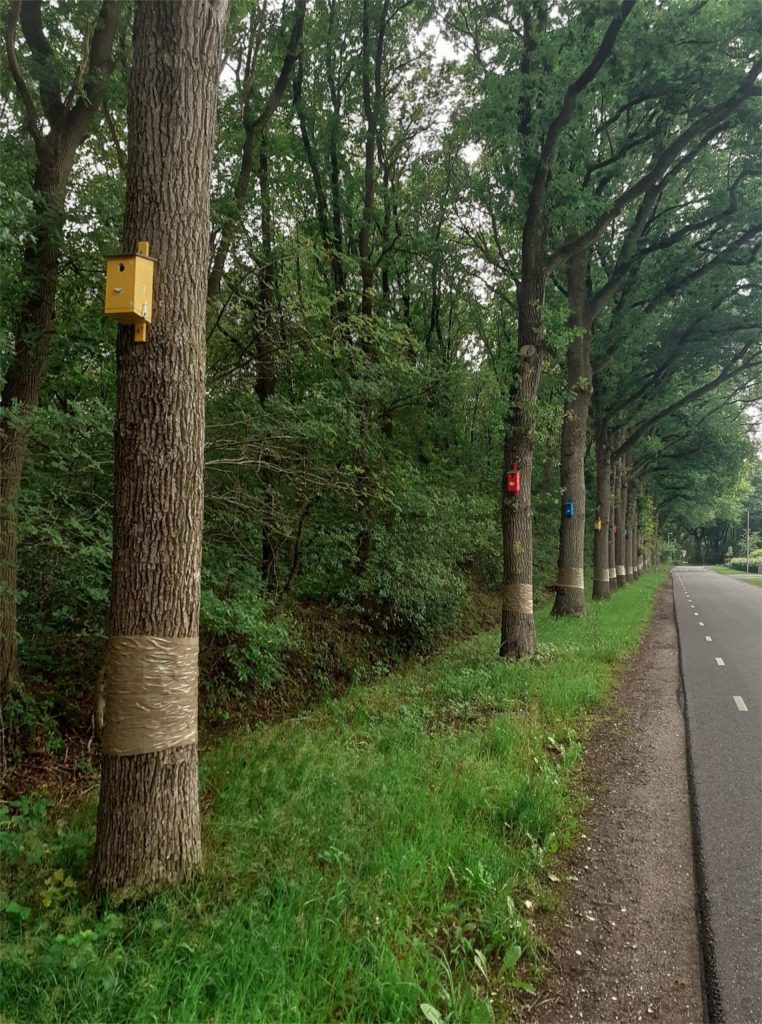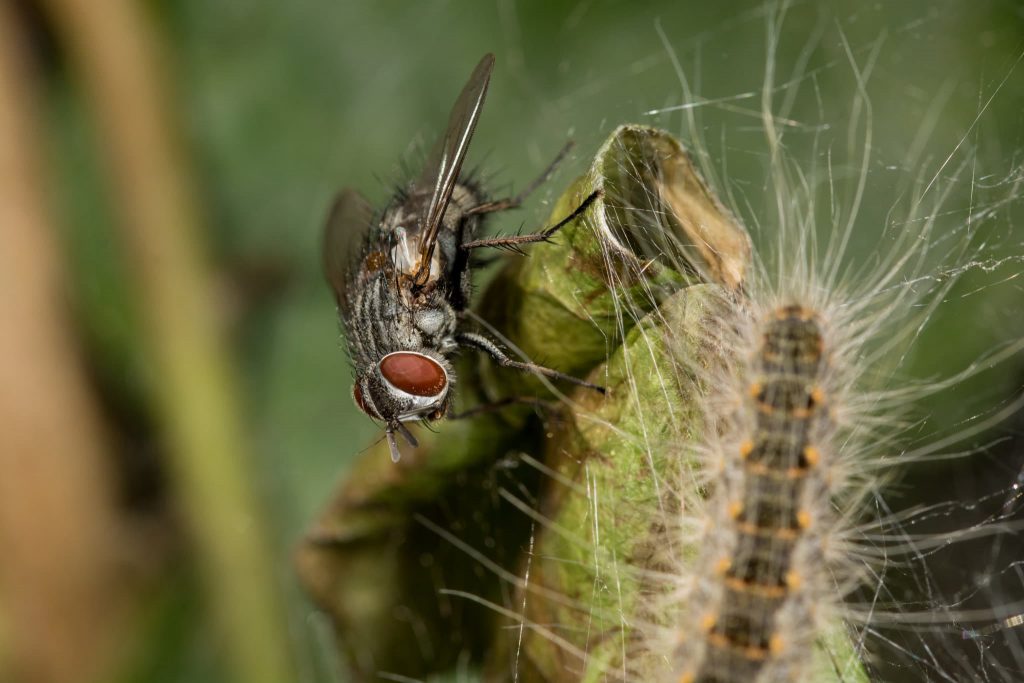Project actions
A. Preparatory actions
Some preparatory actions are crucial to get the project off to a good start.

(*)Gyorgy Csoka, Hungary Forest Research Institute, Bugwood.org – This image is Image Number 5371082 at Insect Images, a source for entomological images operated by The Bugwood Network at the University of Georgia and the USDA Forest Service.(cropped), CC BY 3.0 us, https://commons.wikimedia.org/w/index.php?curid=7021722
Action A.1 Training how to breed the Calosoma sycophanta or forest caterpillar hunter (leader: Province of Limburg)
The forest caterpillar hunter (Calosoma sycophanta) is a beetle that could play a significant role as a predator in the ecological control of the oak processionary and will be examined within one of our actions. In order to release this species of beetle here, we must first learn how to breed them. Several project partners will therefore take part in training in Turkey, a region where a great deal of experience has been gained in breeding this species. This was planned for February 2021, although the corona crisis may lead to delays or alternative arrangements..

Action A.2 Collating basic data on biocide usage in the Netherlands (leader: Sittard-Geleen)
In order to monitor how the use of biocides changes over the course of the project, we must understand the situation at the start. With this preliminary action, we will thus gather the baseline data with regard to biocide usage in Dutch municipalities. This will take the form of a survey among Dutch municipalities to assess the quantities of insecticides (BT and others) used over the past few years in order to tackle the oak processionary. This type of survey will be repeated every year in order to track the reduction in biocide usage (see ‘monitoring’ too).
B. Implementation actions
The implementation actions form the core of the project and encompass the three techniques for the ecological control of the oak processionary, which we will test and demonstrate on a large scale within this project.

Action B1: Tits as natural predator (leader: Province of Antwerp)
Tits love young oak processionary caterpillars. Nesting boxes for tits could help to attract more of the birds and thus increase the predatory pressure on the caterpillars. Within this action, we will measure the precise impact of installing nesting boxes on the number and size of the oak processionary moth nests. We will do this in four provinces in Flanders and the Netherlands and monitor the experiment for four years. As well as measuring the impact, we will also demonstrate the effects to stakeholders in the region and, in turn, try to persuade them to implement this method.

Action B2: Attracting parasitic wasps and flies by means of adapted road verge management (leader: Province of Noord-Brabant)
Ichneumon wasps and flies are natural enemies that are parasitic with respect to the oak processionary. They lay their eggs in the caterpillars and the larvae then eat the caterpillars from the inside out. To have an impact, the number of ichneumon wasps and flies must be sufficiently high. It is therefore important that there is adequate, suitable habitat (= environment) for the parasites around the infected oak trees.
Within this action, we will review the best methods for managing roadsides in order to attract as many parasitic ichneumon wasps and flies as possible. We will compare six types of verge management and establish the corresponding effect on the numbers of ichneumon wasps and flies and, in turn, on the oak processionary. We will do this in the provinces of Antwerp, Limburg, Gelderland and Noord-Brabant and in the municipality of Sittard-Geleen. On-site demonstrations will also be provided in relation to this study.

Action B3: Breeding and releasing the Calosoma sycophanta or forest caterpillar hunter (leader: Province of Limburg)
The forest caterpillar hunter is a ground beetle which is indigenous to Europe. The species is currently under serious threat in Belgium and died out completely in the Netherlands some decades ago. Because the beetle loves to eat a range of primarily hairy caterpillars, which tend to be avoided by other animals, the forest caterpillar hunter is a welcome species in areas where certain types of moth/butterfly are multiplying out of control. The beetle has therefore been employed for biological control by means of introduction into areas where they do not usually occur (e.g. USA and Canada). The beetle has also been released in areas where the species is already found but where their quantities are too small to tackle the caterpillar plague. We would like to try this latter approach on a small scale in Belgium (test locations in Antwerp and Limburg) and, if it is successful, expand it to the Netherlands. In the long-term, we would like to work in collaboration with pest-control companies.
Action C. Monitoring and socio-economic study (leader: EV INBO)
In the monitoring component of the project, we will principally measure the precise effects of the aforementioned actions on oak processionary numbers. We thus hope to demonstrate the effectiveness of the proposed methods.
We will also monitor whether the use of biocides (quantities) in the fight against the oak processionary reduces during the project, and for up to five years after it ends. The number of doctors’ consultations related to the irritating hairs on the caterpillars will also be monitored.
Finally, a socio-economic study will also be completed, which will assess the economic impact of the oak processionary and the costs/benefits of each of the proposed methods compared to the current approach.
D. Communication and dissemination
These actions aim to disseminate the results of the project far and wide, in order to significantly reduce the use of biocides. We would like to provide expertise and tools to decision-makers, local authorities, and all the relevant stakeholders and organisations that work on controlling the oak processionary. We will offer training and courses, organise demonstrations in all the affected provinces, and provide information via our newsletters, website and social media.
A decision-tree, which sets out which methods are most effective under which circumstances, and new guidelines regarding the control of the oak processionary, will support policy-makers with respect to evolving towards their pesticide-free control.